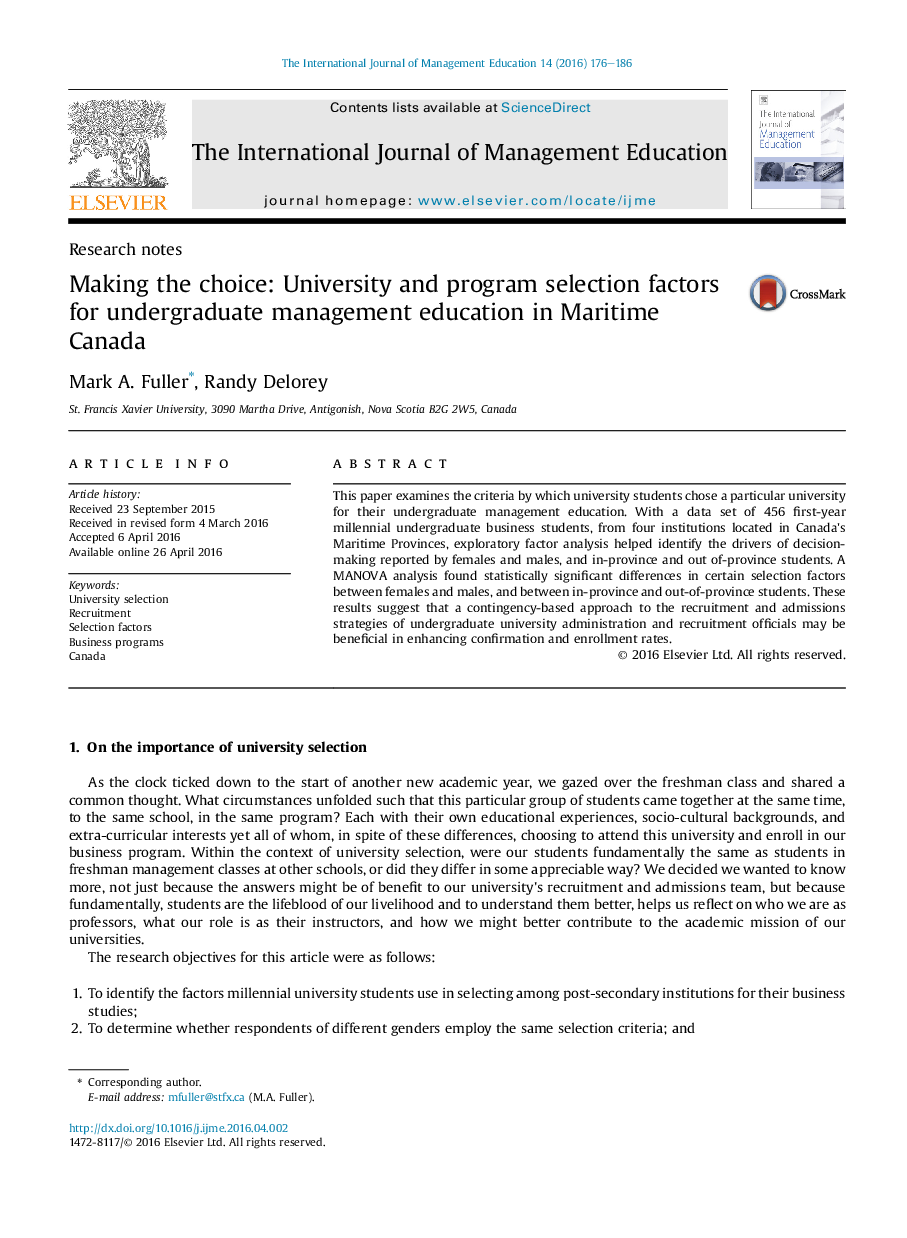| Article ID | Journal | Published Year | Pages | File Type |
|---|---|---|---|---|
| 357323 | The International Journal of Management Education | 2016 | 11 Pages |
•We surveyed 456 first-year students across four university business programs.•Exploratory factor analysis was used to identify key selection factors.•Differences in selection factors were found among female and male students.•Differences in selection factors were found among local and out-of-region students.•Customized recruitment methods would improve confirmation and enrollment rates.
This paper examines the criteria by which university students chose a particular university for their undergraduate management education. With a data set of 456 first-year millennial undergraduate business students, from four institutions located in Canada's Maritime Provinces, exploratory factor analysis helped identify the drivers of decision-making reported by females and males, and in-province and out of-province students. A MANOVA analysis found statistically significant differences in certain selection factors between females and males, and between in-province and out-of-province students. These results suggest that a contingency-based approach to the recruitment and admissions strategies of undergraduate university administration and recruitment officials may be beneficial in enhancing confirmation and enrollment rates.
